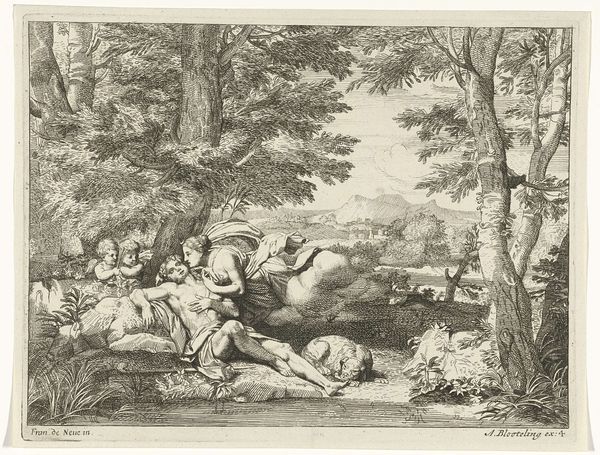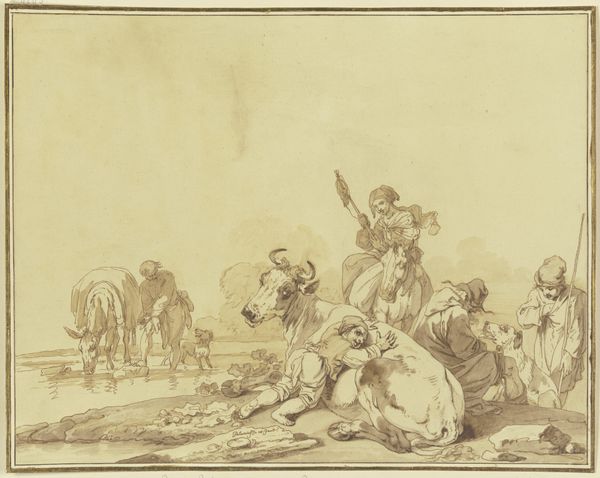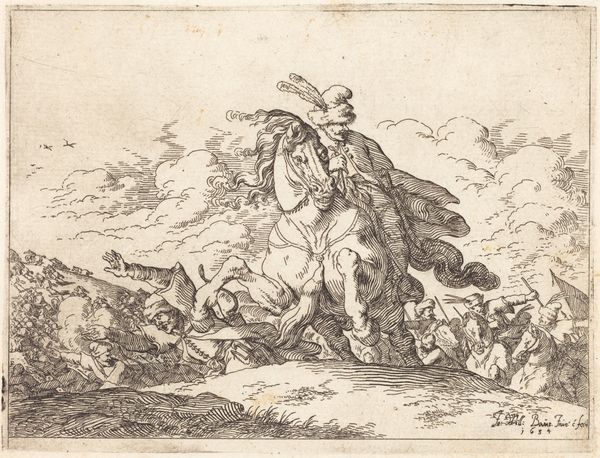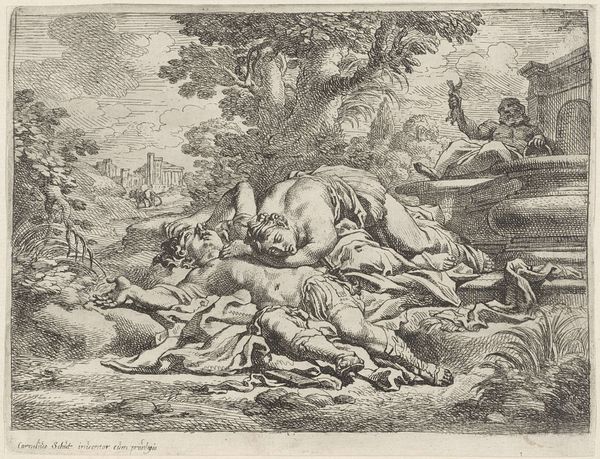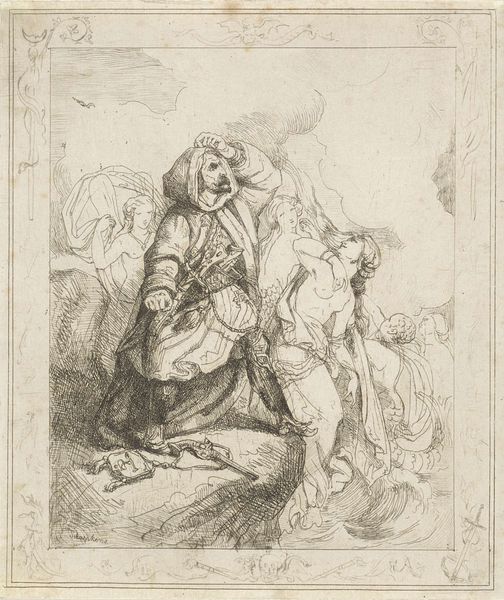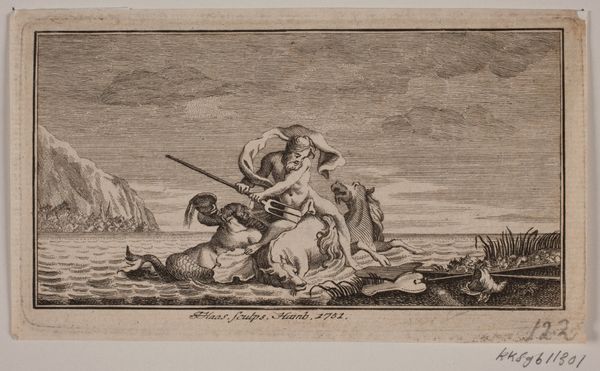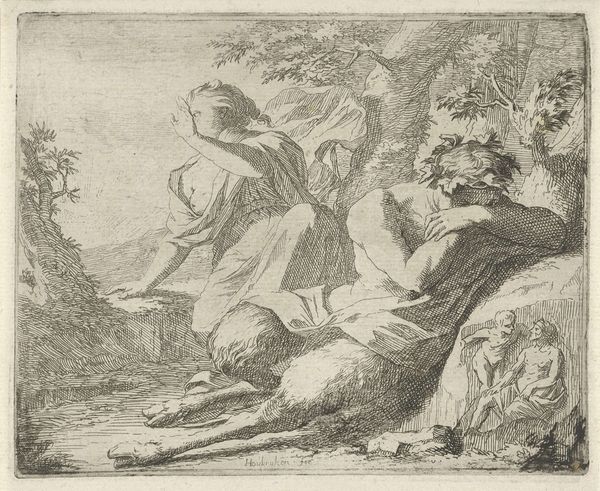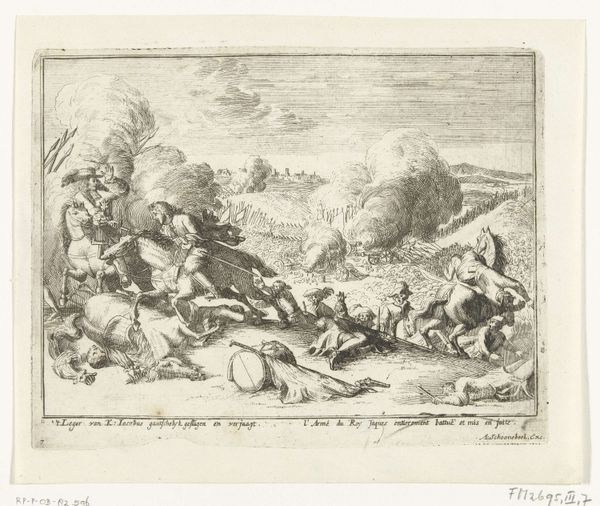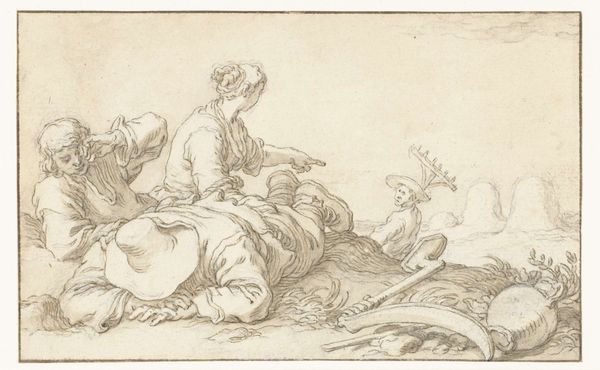
drawing, print, etching
#
drawing
#
baroque
# print
#
etching
#
landscape
#
genre-painting
Dimensions: height 130 mm, width 165 mm
Copyright: Rijks Museum: Open Domain
Frederick Bloemaert's "The Month of July", etched in the 17th century, encapsulates the labors and repose of the summer harvest. Dominating the foreground are potent symbols: the scythe, implement of both harvest and grim reaping, and the jug, a vessel of sustenance. Consider the recurring motif of the pointing figure, reminiscent of John the Baptist in Renaissance art, directing our gaze toward a higher truth or path. Here, the figure points towards the horizon, perhaps signifying the future harvest or the passage of time itself. The reclining figures, reminiscent of classical depictions of slumbering gods, evoke a sense of dreamy abandon amidst the demanding work. These archetypes—the laborer, the harvest, the pointing figure—recur throughout art history, echoing across cultures and centuries, embedded in our collective unconscious. They represent the cyclical nature of life, death, and rebirth, tapping into primal emotions and resonating with the viewer on a deep, subconscious level. The scythe, an emblem of mortality, transforms into a symbol of life's renewal. This cyclical progression of symbols reminds us that our present is perpetually shaped by echoes of the past.
Comments
No comments
Be the first to comment and join the conversation on the ultimate creative platform.


